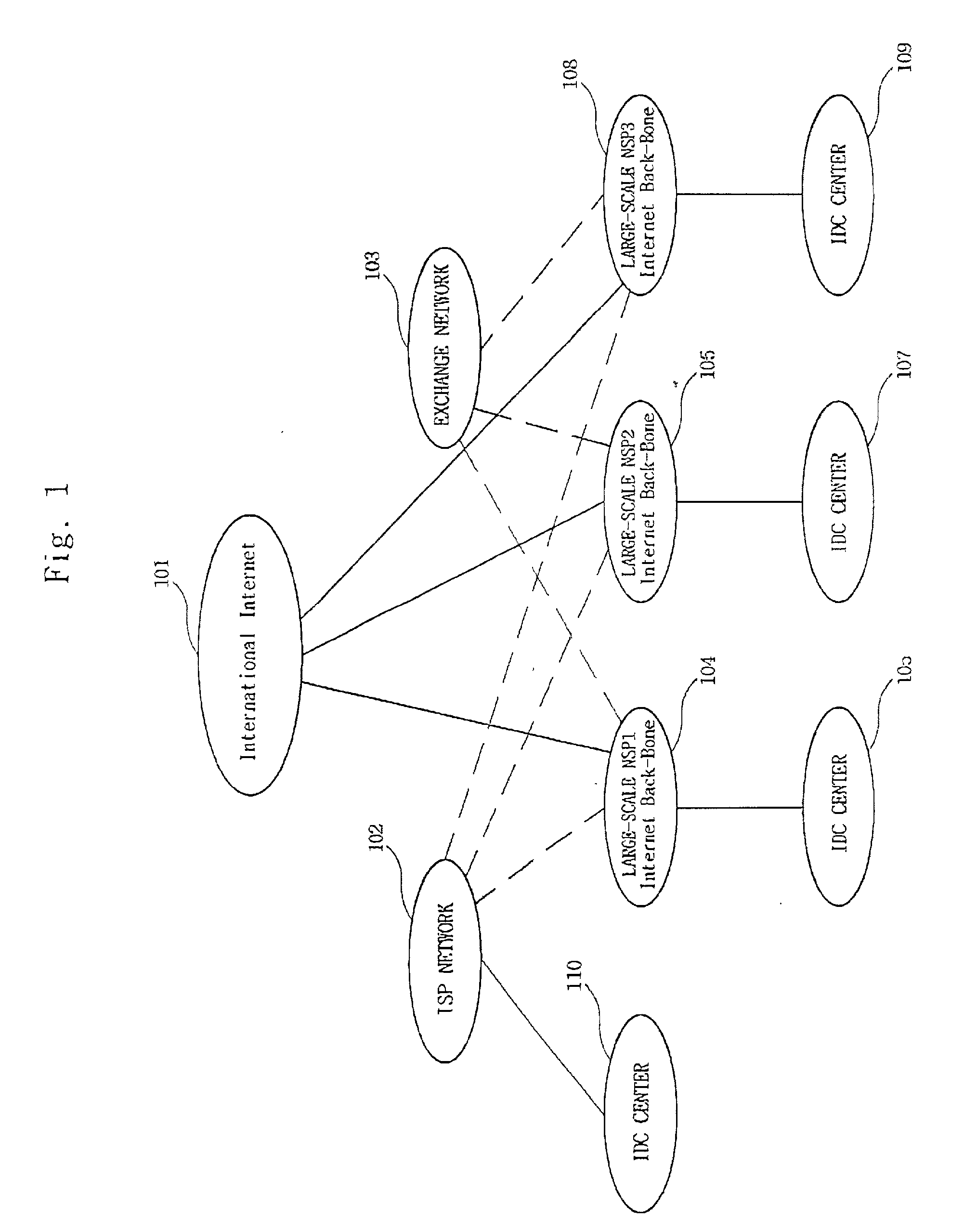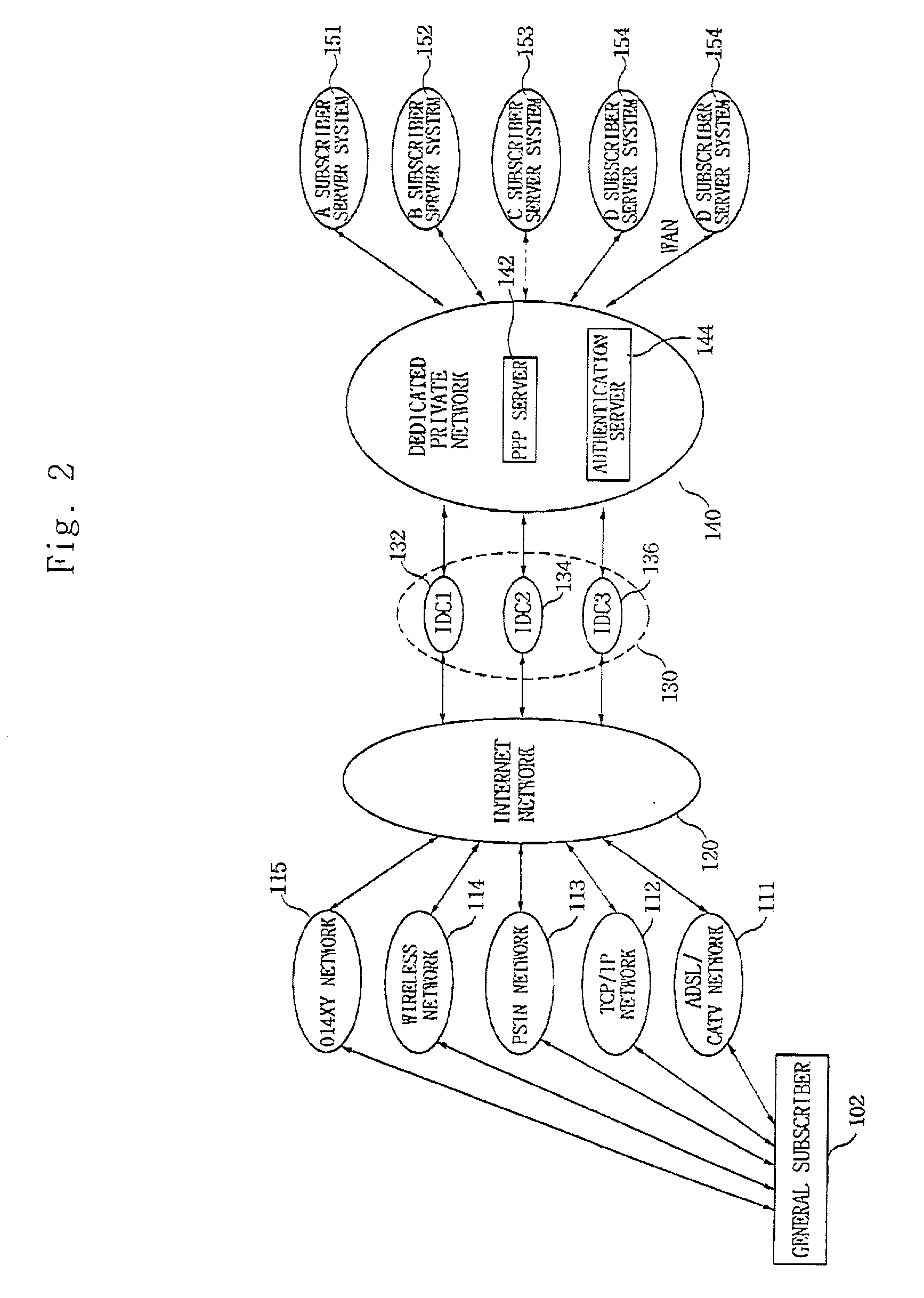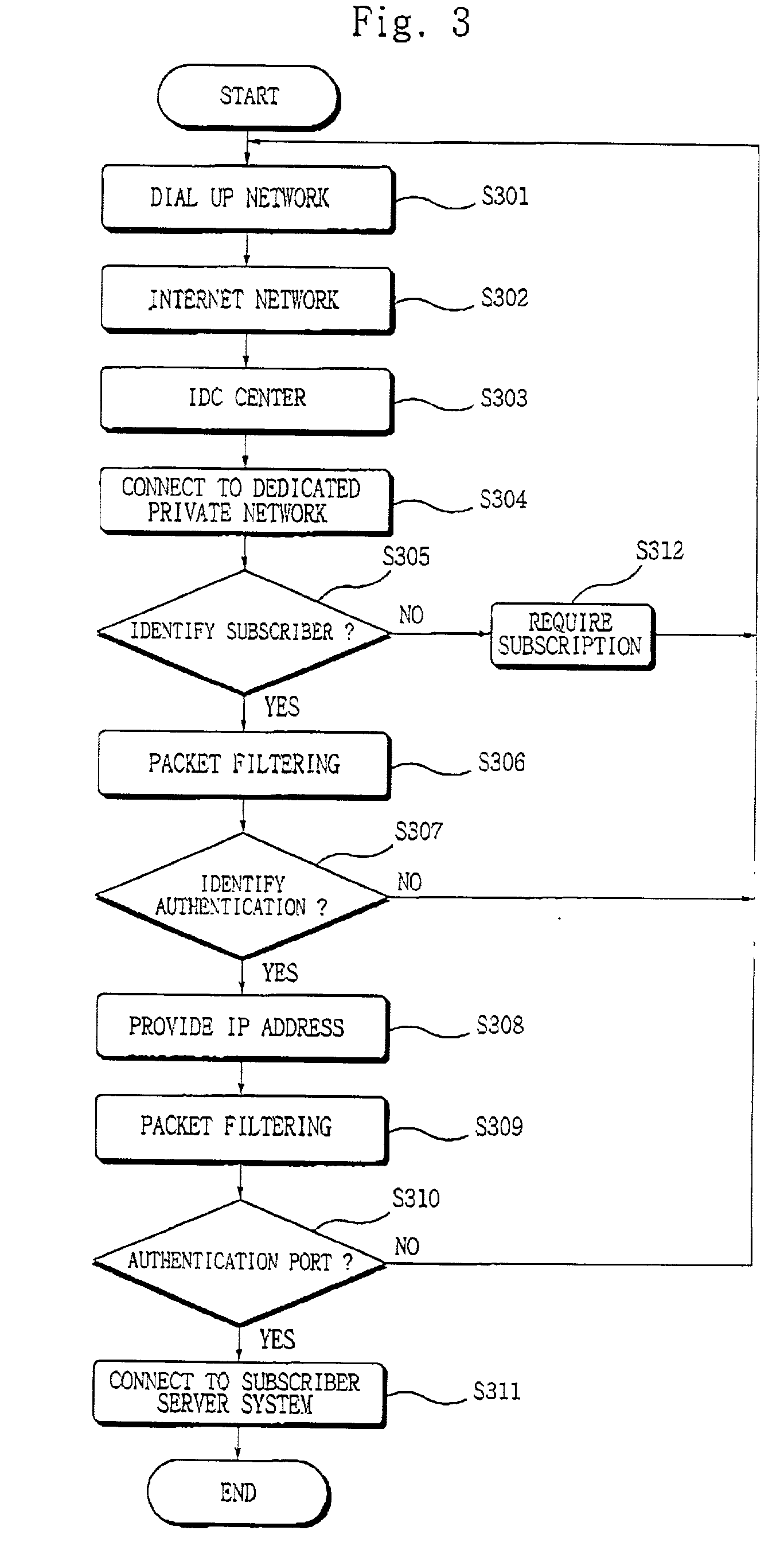Dedicated private network service method having backup and loads-balancing functions
- Summary
- Abstract
- Description
- Claims
- Application Information
AI Technical Summary
Benefits of technology
Problems solved by technology
Method used
Image
Examples
Embodiment Construction
[0070] Hereinafter, preferred embodiments of the present invention will be described in detail with reference to the accompanying drawings.
[0071] FIG. 2 is a view for showing a network structure for dedicated private network services according to the present invention.
[0072] As shown in FIG. 2, a general subscriber 102 connects to an internet network 120 through any of a 014XY network 115, a wireless network 114, a PSTN network 113, a TCP / IP network 112, and an ADSL / CATV network 111, and an internet data center 130 connects the internet network 120 and the dedicated private network 140, and plural subscriber server systems 151 to 154 are connected to the dedicated private network 140.
[0073] In order to construct a dedicated private network according to the present invention, the dedicated private network includes an authentication server 144 and a PPP server 142 for providing a private IP, connecting to the subscriber server system 154 in a wide area network (WAN). The 014XY network...
PUM
 Login to View More
Login to View More Abstract
Description
Claims
Application Information
 Login to View More
Login to View More - R&D
- Intellectual Property
- Life Sciences
- Materials
- Tech Scout
- Unparalleled Data Quality
- Higher Quality Content
- 60% Fewer Hallucinations
Browse by: Latest US Patents, China's latest patents, Technical Efficacy Thesaurus, Application Domain, Technology Topic, Popular Technical Reports.
© 2025 PatSnap. All rights reserved.Legal|Privacy policy|Modern Slavery Act Transparency Statement|Sitemap|About US| Contact US: help@patsnap.com



